Board and batten is a classic interior wall treatment that adds charm and visual interest to any room.
In an entryway, board and batten can make a stylish first impression and set the tone for the rest of the home’s decor.
What is board and batten style?
Board and batten refers to wide vertical boards or planks with narrower vertical strips, called battens, applied over the seams.
This covering creates a charming country cottage look with clean lines and subtle shadowing in between the boards and battens.
Board and batten offers versatility in both styling and budget.
Painted or stained wood boards can give a rustic, farmhouse feel or you can opt for more polished materials like tile or wallpaper on boards for a luxurious effect.
Budget DIY-friendly board and batten can be created with plywood and trim pieces.
Or go for higher-end solid wood boards and customized details.
✨Click to Get My 101 FREE Designer Room Ideas
Rustic Wood Board and Batten
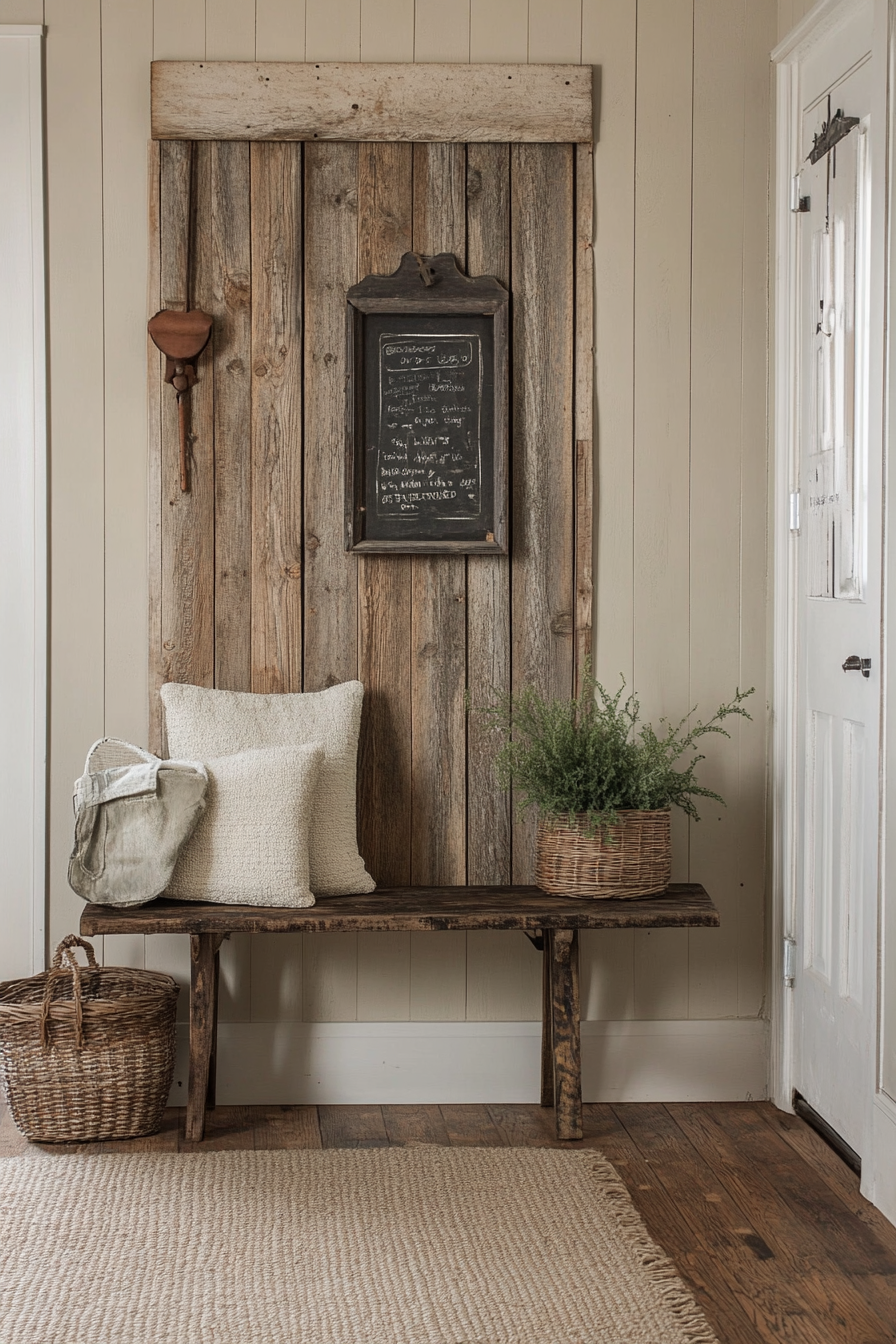
A rustic wood board and batten entryway sets the tone for cozy country charm.
For a truly authentic look, use salvaged barn wood planks with a natural, unstained finish.
Allow the wood to show signs of charming distress and imperfection.
Rough-cut new pine or cedar boards also have that timeworn appeal.
For the battens, use thinner strips of wood in a contrasting finish.
Dark battens really accentuate the lighter boards.
Leave visible nails between the boards and battens to enhance the handcrafted look.
Consider leaving a small gap between some of the boards to add visual interest.
This unfussy style works well with country décor accents like a vintage window shutter repurposed into a message board.
Baskets, a rustic side table and vintage signs can complete the look.
Just remember to keep items minimal for a truly cozy feel.
Painted Board and Batten
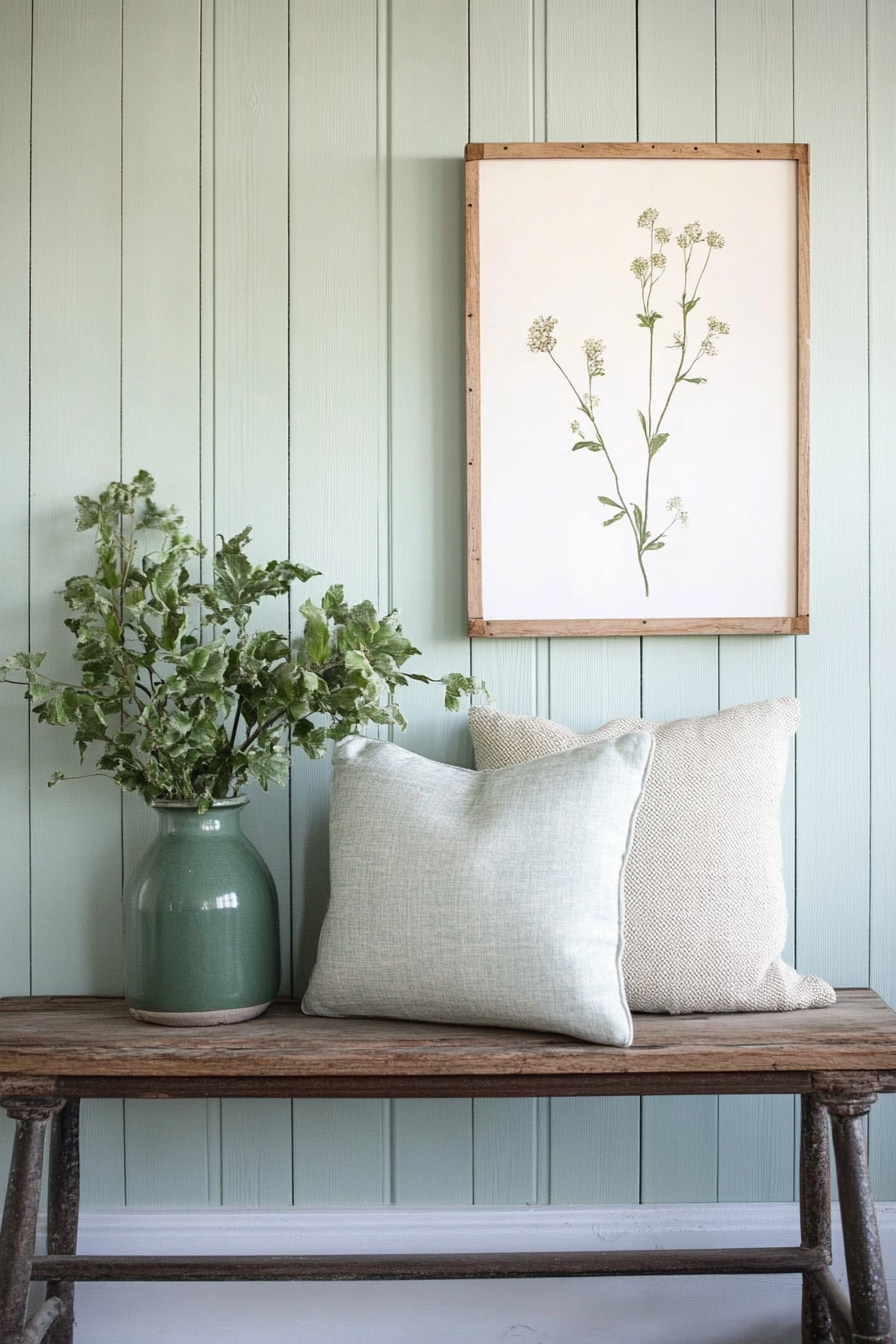
Paint is an affordable way to get the board and batten look on a budget.
With painted boards and battens, you can play with colors to complement your existing decor.
Crisp white makes the wall treatment pop.
Soft blues or greens create a soothing backdrop.
Gray-greens work with both modern and farmhouse style.
For the boards, use sheets of plywood cut to the desired width.
Battens can be made from pine boards, trim pieces or strips of plywood.
Prime and paint the boards and battens in your colors of choice before installing.
Use high-quality latex paint for a durable and washable finish.
Consider painting the inside edges of the battens in a contrasting color to define them against the boards.
You can also paint the center battens in an alternate color as an accent.
Paint the nails to match for a polished look.
Painted board and batten allows you to switch up colors seasonally or when you redecorate.
Have fun playing with color combinations and paint techniques like ombre or stenciling.
This style pairs well with painted furniture, patterned pillows and an eclectic gallery wall.
Herringbone Board and Batten
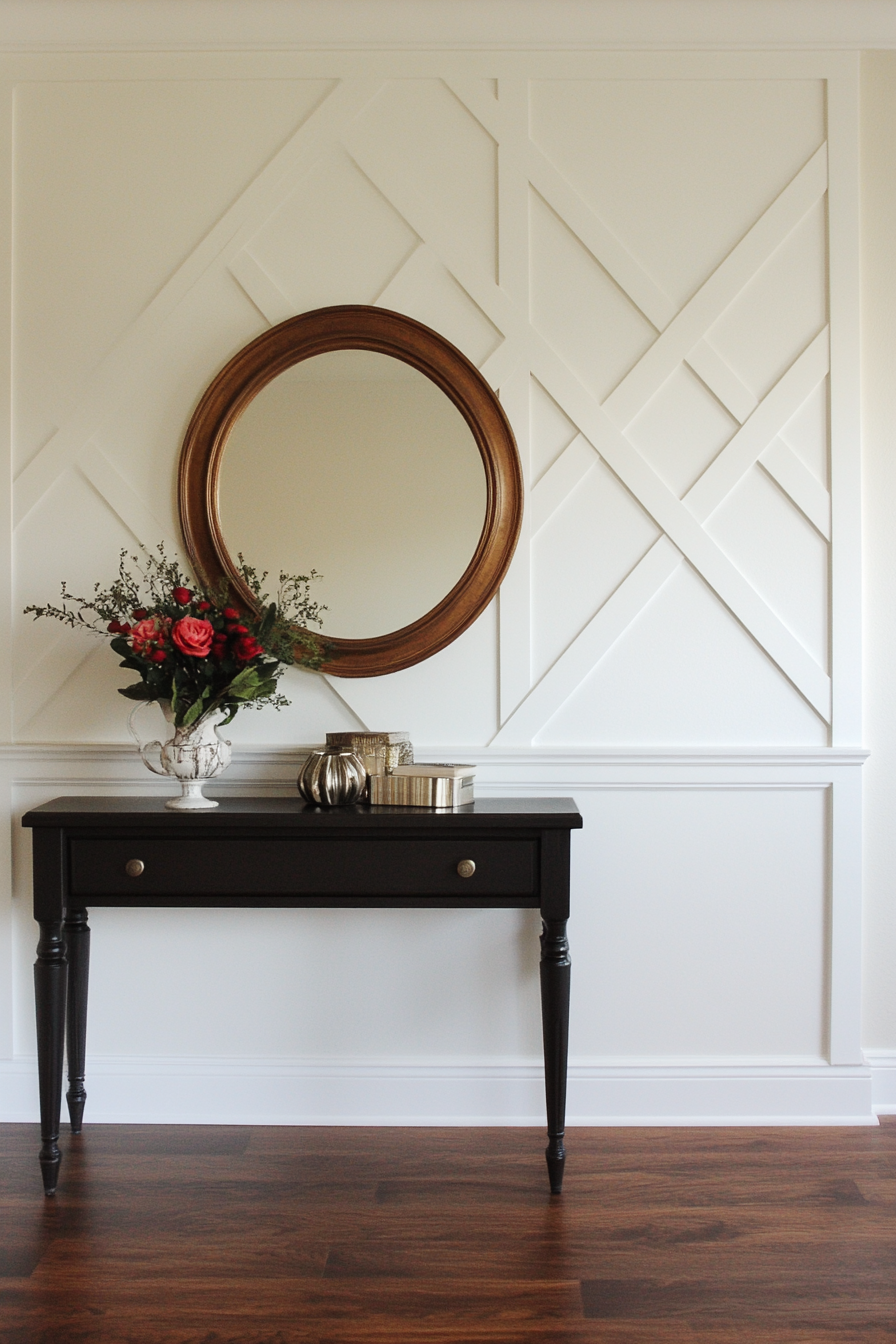
Give your entryway unconventional character with a herringbone pattern created from board and batten.
Laying the boards out on a diagonal in a zigzag design makes a bold visual statement.
Paint the boards and battens in contrasting colors for even more punch.
For a three-dimensional look, use wood boards and battens, cutting and joining them to form the chevron pattern.
Painted MDF boards also work well for achieving clean lines.
Consider painting the boards black and the battens white for dramatic contrast.
The dynamic energy of the herringbone board and batten pairs nicely with modern furnishings and metallic accents.
Hang a large statement mirror to reflect the geometric pattern.
A sleek storage console table can provide landing space below the design.
Wallpaper Board and Batten
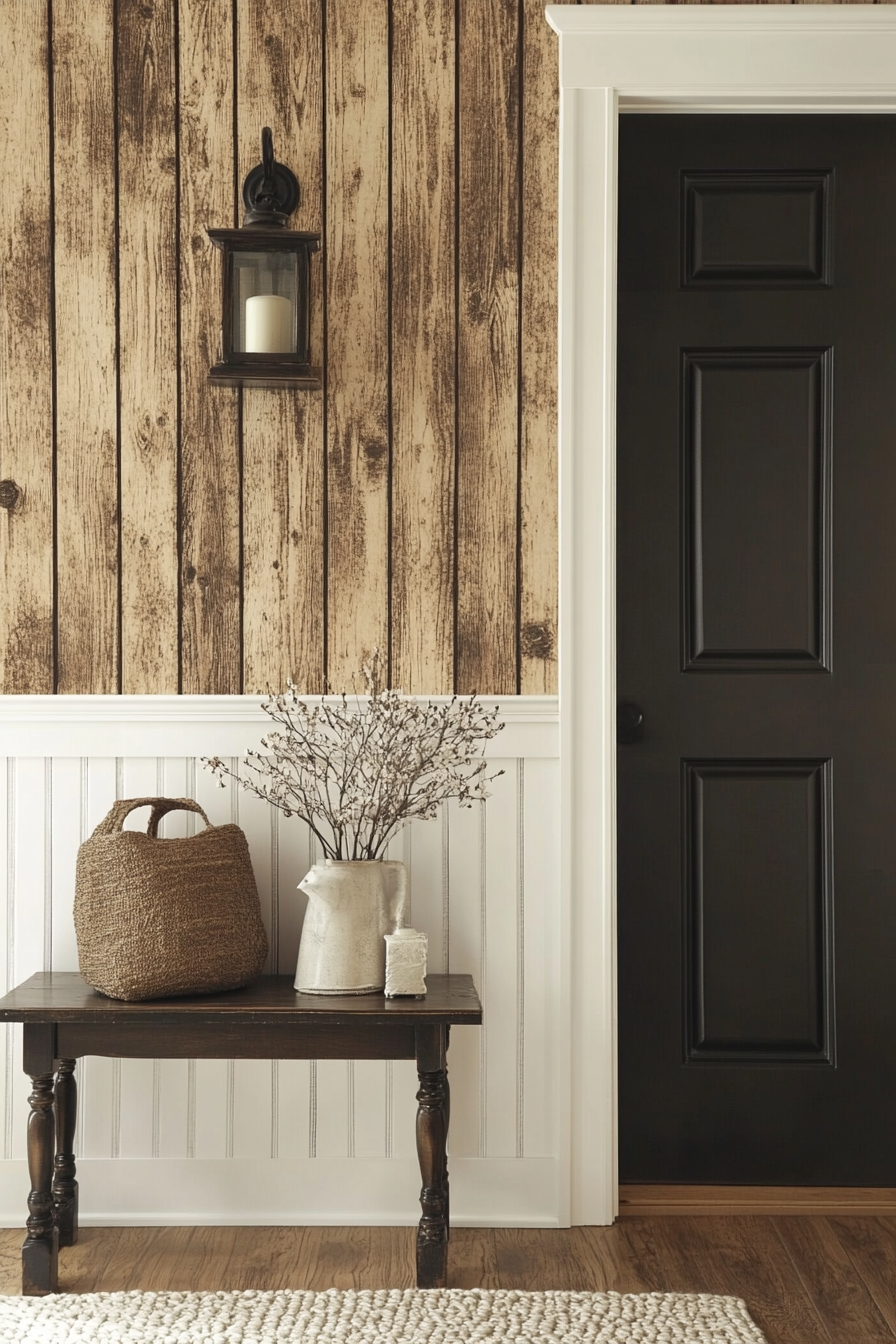
Want to get the board and batten look without any demolition or installation work?
Use wallpaper with a faux board and batten print instead.
This easy wall treatment lets you quickly update the entryway with major visual impact.
When selecting a wallpaper, consider the overall style you want to achieve.
Rustic wooden plank prints work well with vintage décor.
Geometric patterns create a modern mood.
Floral prints in soft palettes give a romantic cottage feel.
Measure the wall space carefully and order wallpaper with dimensions to fit.
Review the manufacturer’s instructions for application to ensure you get the printed boards positioned accurately.
The pattern repeats and layout should align properly across seams.
Finish the wallpaper board and batten wall with appropriate trim details.
Painted wood trim strips applied horizontally and vertically add structure.
For a polished look, install crown molding at the top and a chair rail detail to divide upper and lower walls.
Accent with decor in similar styles to the wallpaper print.
✨Click to Get My 101 FREE Designer Room Ideas
Stenciled Board and Batten
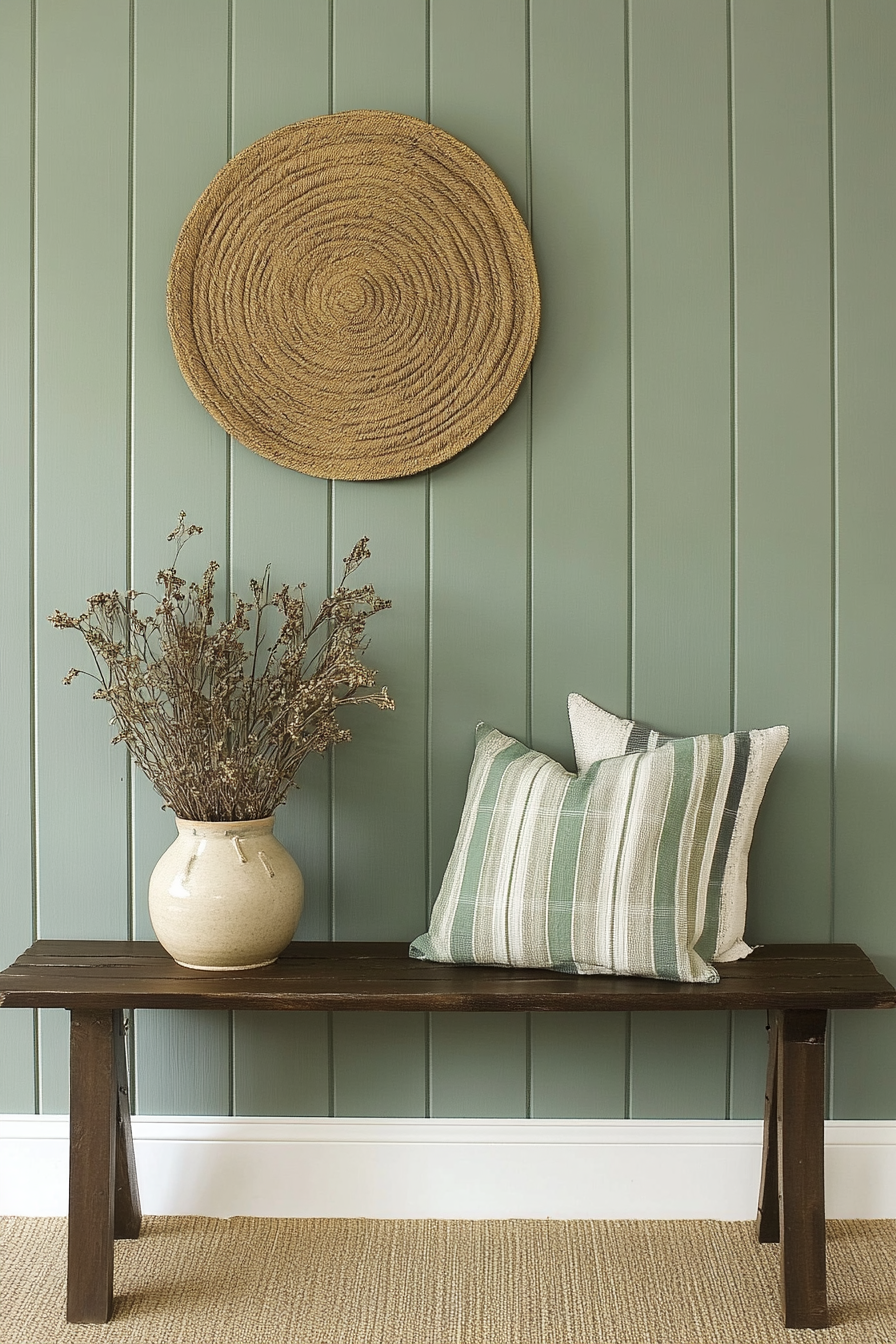
Get crafty with a faux board and batten wall created from stenciled patterns.
All you need is paint, stencils and painter’s tape.
Use stencils with straight edge designs that can be lined up to mimic rows of vertical boards between battens.
On a primed wall, lay masking tape where you want the battens to create clean edges.
Then use your stencils and paint to fill in the alternating board areas in between.
Remove the tape to reveal sharp painted lines for the faux battens.
Consider layering two colors for the boards.
Stencil the base coat in one lighter tone.
Then use a second darker color to stencil wood grain detail on top.
You can find specialty stencils to create wood plank and shiplap textures.
For a rustic vibe, use stains in gray wood tones.
Soft blues, greens or subtle plaids project cozy country charm.
Bold solid colors like navy blue, black or brick red give an industrial edge.
Play with gloss and metallic paints for polished sophistication.
The finished stenciled board and batten wall provides a personalized backdrop to decorate with color accents and accessories to match your style.
Tile Board and Batten

Tile adds eye-catching texture and shine to a board and batten entryway wall.
Mixing row upon row of sleek ceramic or porcelain tiles with slim grout lines mimics the look of traditional wood boards and battens.
This durable surface stands up well to high-traffic entryways.
Stick with simple rectangular tile shapes laid vertically.
Options like subway tiles, planks or ledgers work well.
The tile size, thickness, surface texture and grout color all impact the overall look.
Larger tiles with dark grout lines give more definition between “boards”.
Smaller tiles with matching grout result in finer lines that read more as solid surface.
Consider installing tiles in an alternating pattern between two colors or finishes.
This helps separate the board rows visually.
Accent with trim details like chair rail and baseboards in a coordinating metal finish.
Pull in contemporary light fixtures, linens and window shades to complement the tile.
Beadboard Panels
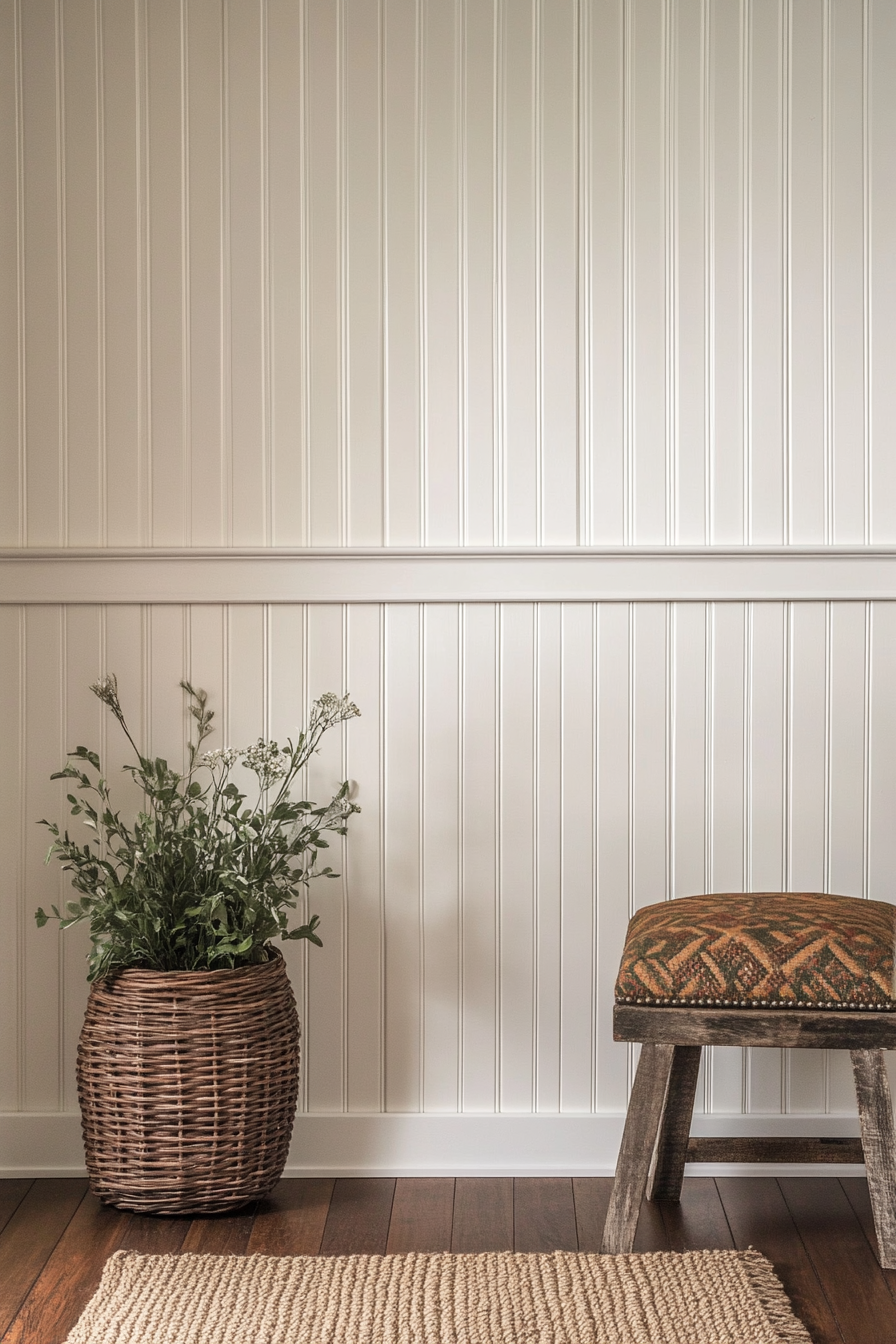
Achieve the board and batten look easily with the help of prefabricated beadboard panels.
These readymade wood planks have evenly spaced grooves carved into the surface to create narrow ridges, known as beadboard.
Designed to be installed side by side as wainscoting, beadboard offers an instant allover texture.
On walls, beadboard panels create the illusion of defined boards separated by battens.
But it’s actually a solid wood surface with textured detail.
Install the 4×8-foot panels edge-to-edge.
Then apply vertical trim pieces over the seams to replicate battens.
Beadboard panels come pre-primed and ready for paint or stain.
White is a popular choice to really play up the texture.
But you can also do bold colors or washes of glaze over stains to accentuate the carved lines.
Distressing and sanding between finishes adds antique character.
Pair painted beadboard with cottage touches like a window box, lantern sconces and a bench padded with floral cushions.
Stained wood beadboard has a lodge feel that works well with leather accents, antler hooks and plaid blankets.
Brick Board and Batten
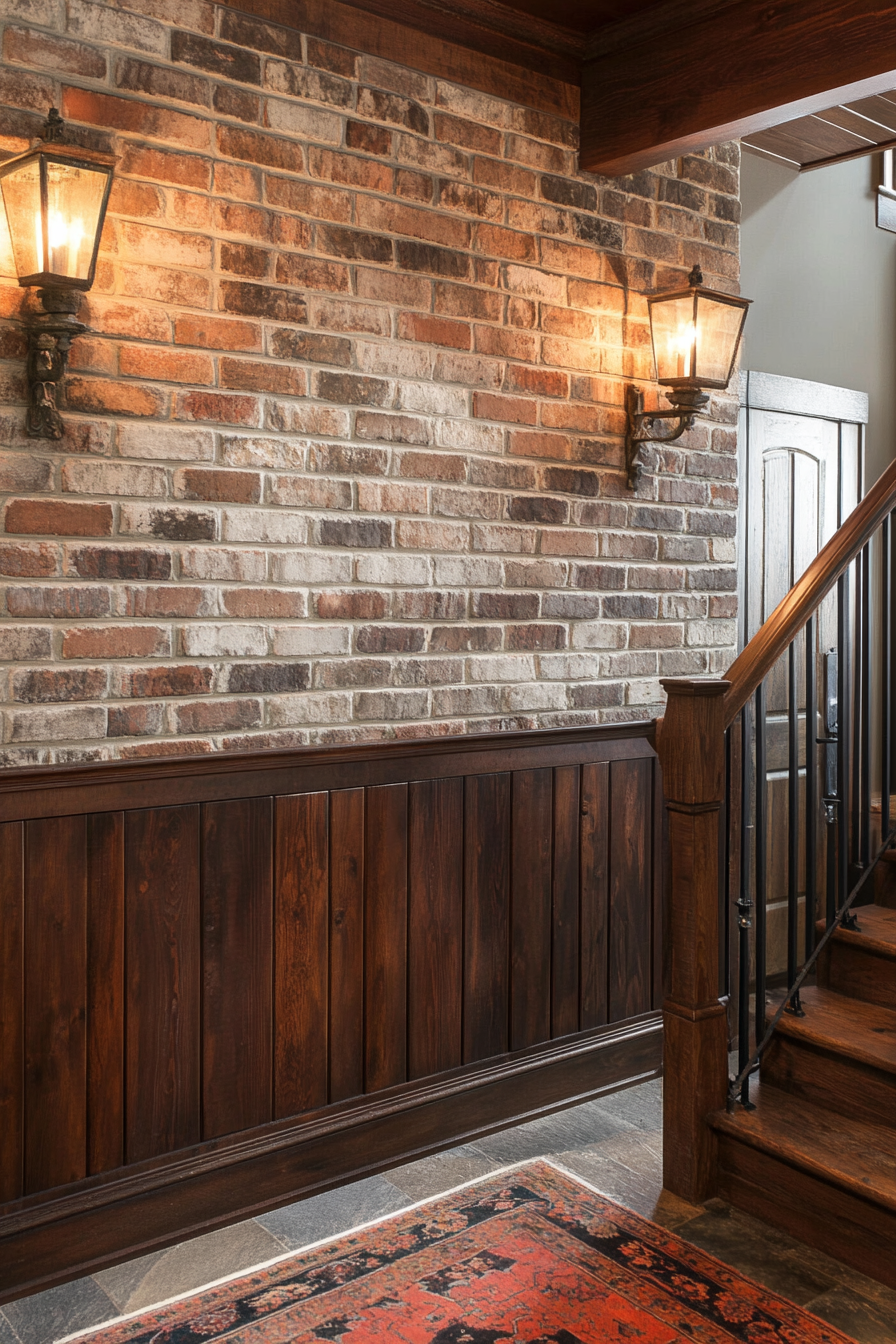
For a durable and decorative take on board and batten, consider installing thin brick veneers.
Staggered rows of thin brick panels create the look of stacked horizontal boards separated by mortar lines that mimic battens.
Brick makes a substantial style statement and brings natural texture to the entryway.
Thin brick veneer panels consist of slices of real brick adhered to a lightweight composite or mesh backing.
This allows for easy installation and a lighter load than standard bricks.
Panels typically come in a modular size around 24 inches tall by several feet wide.
Working in manageable sections, start by applying mortar over the wall area.
Then press the bricks into place, alternating the vertical joints from row to row.
Use brick chisels to shape edges and create variance.
Let the mortar dry completely between rows.
The brick’s natural color provides warmth.
But you can also paint or stain mortar lines to add definition.
For a modern industrial edge, use all black mortar.
Soft white mortar around red brick has traditional cottage charm.
Match mortar to brick for a seamless solid wall look.
✨Click to Get My 101 FREE Designer Room Ideas
Wainscoting Board and Batten
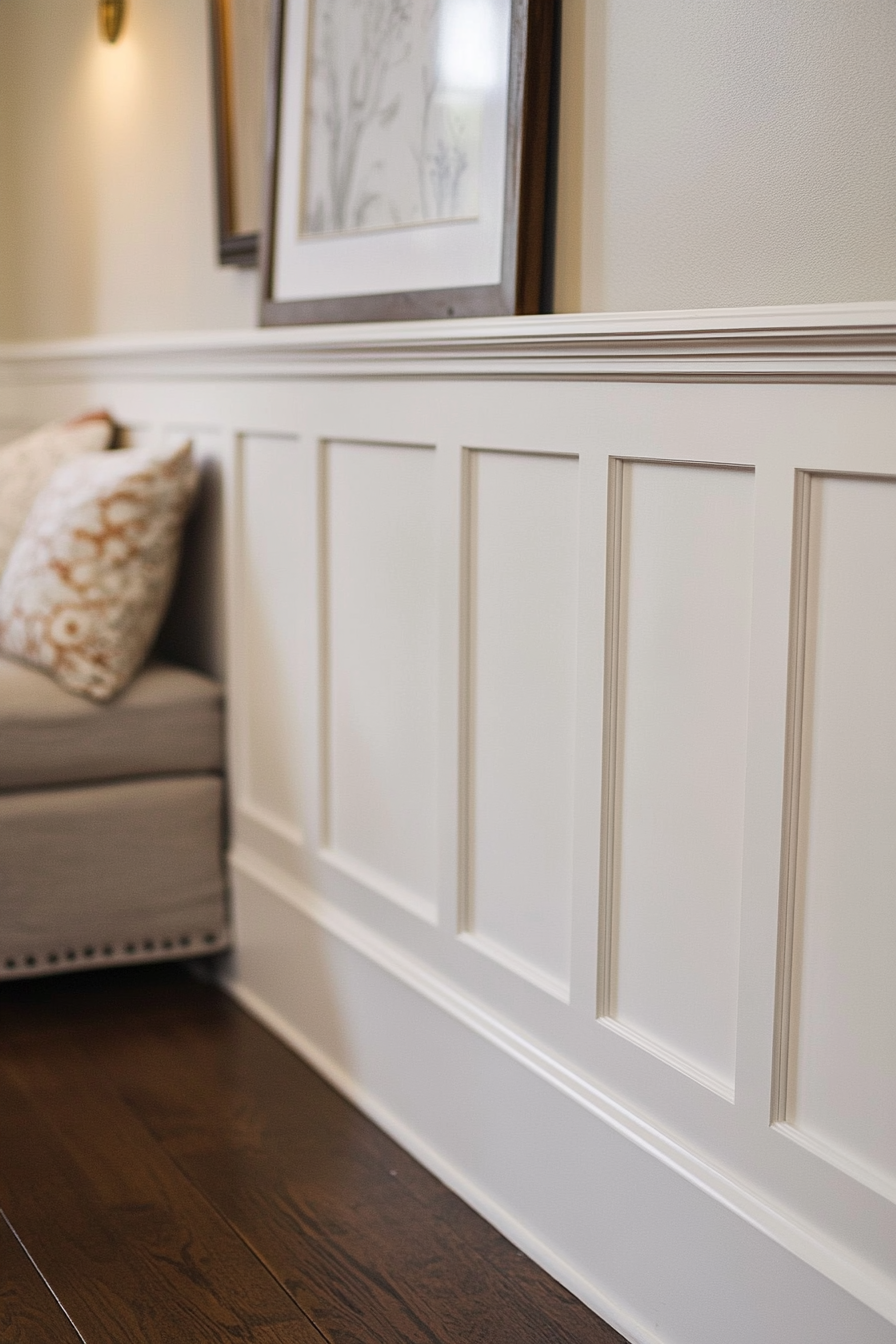
Only want board and batten on the lower half of your entryway walls?
Installing wainscoting with vertical boards is a great option that expands style beyond floor level.
Limiting the treatment to a wainscot creates a polished statement without overwhelming the space.
Typically, wainscoting runs about 30-36 inches high on walls, aligned with window sills or door frames.
This leaves the upper walls open for art, wallpaper or solid painted color.
Within the wainscot, apply wide wood planks vertically as boards, with thin wood strips over the seams as battens.
For a built-in look, encase the wainscoting between baseboard trim at the floor and cap molding at the top edge.
The cap visually separates the texture below from the flat wall above.
Consider widening the boards and battens proportionally to fit the wall height.
Wider planks running at a larger scale balance well with the lowered installation.
The wainscoting can be stained, painted, pickled, whitewashed or distressed to suit your decor.
Throw pillows, window treatments and light fixtures in coordinated colors and materials carry the style upstairs.
Shiplap Board and Batten
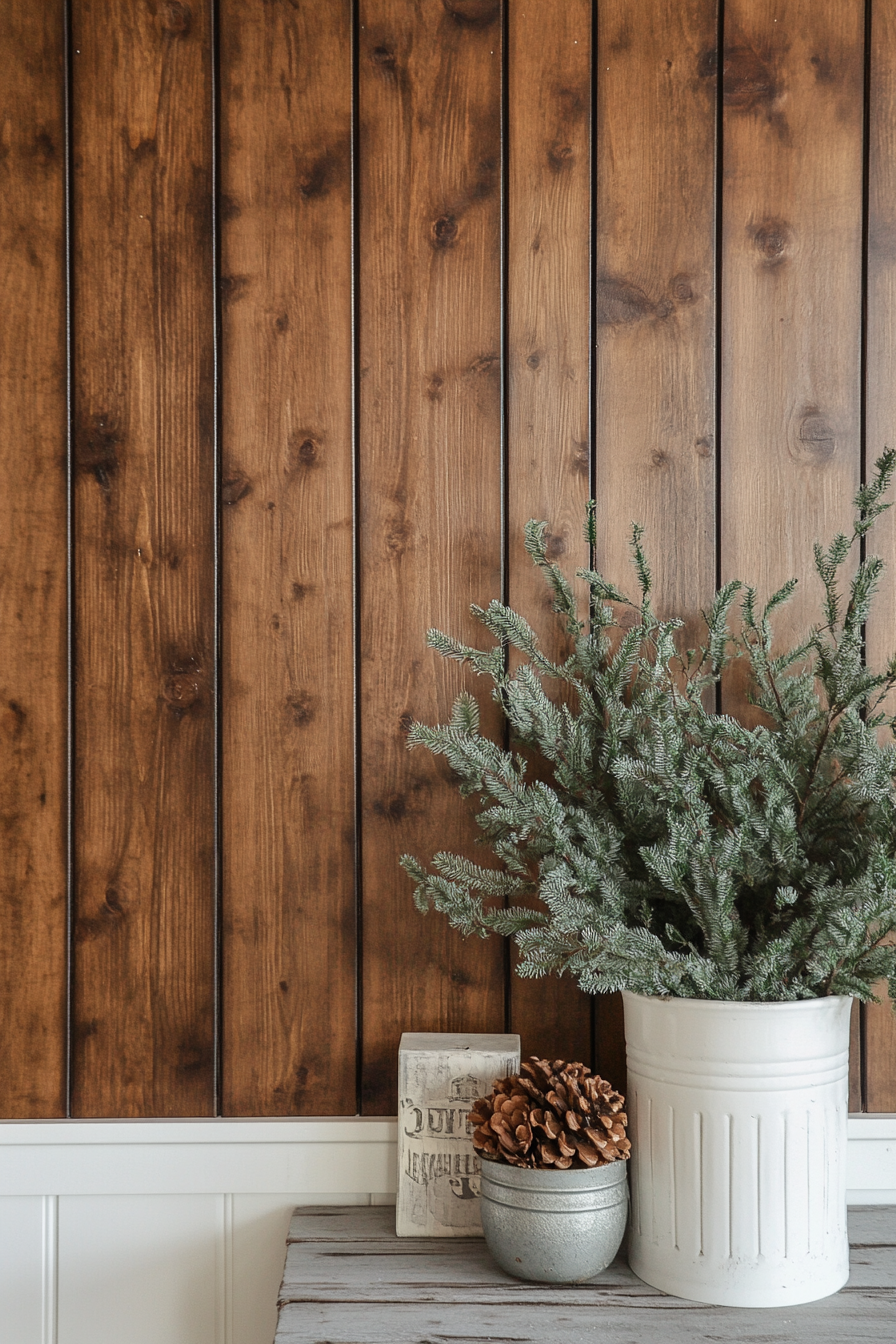
Shiplap boards with visible joints provide rustic texture similar to board and batten.
Horizontal shiplap is most common, but installing the wooden planks vertically can deliver the same effect with boards divided by battens.
The subtle gaps between shiplap mimic the shadow lines of traditional board and batten.
Wood shiplap boards have machined edges that interlock so the planks fit snugly together.
Install them along the wall in overlapping rows.
Use nails or screws set into the overlapping lip to secure boards.
Standard shiplap boards are around 6 inches across, but wider planks can help exaggerate the board and batten look.
Unfinished shiplap shows off the wood’s natural color and grain.
But painting or staining allows customizing to suit your style.
Consider alternating colors from board to board.
Or accent with colored battens over natural wood.
Whitewashed gray-blue boards with crisp white battens give a coastal vibe.
Shiplap board and batten adapts easily to farmhouse, cottage, industrial and modern decors.
Have fun pairing reclaimed woods, galvanized metal accents, vintage signs or sleek fixtures.
The texture adds welcoming warmth wherever applied.
Modern Board and Batten
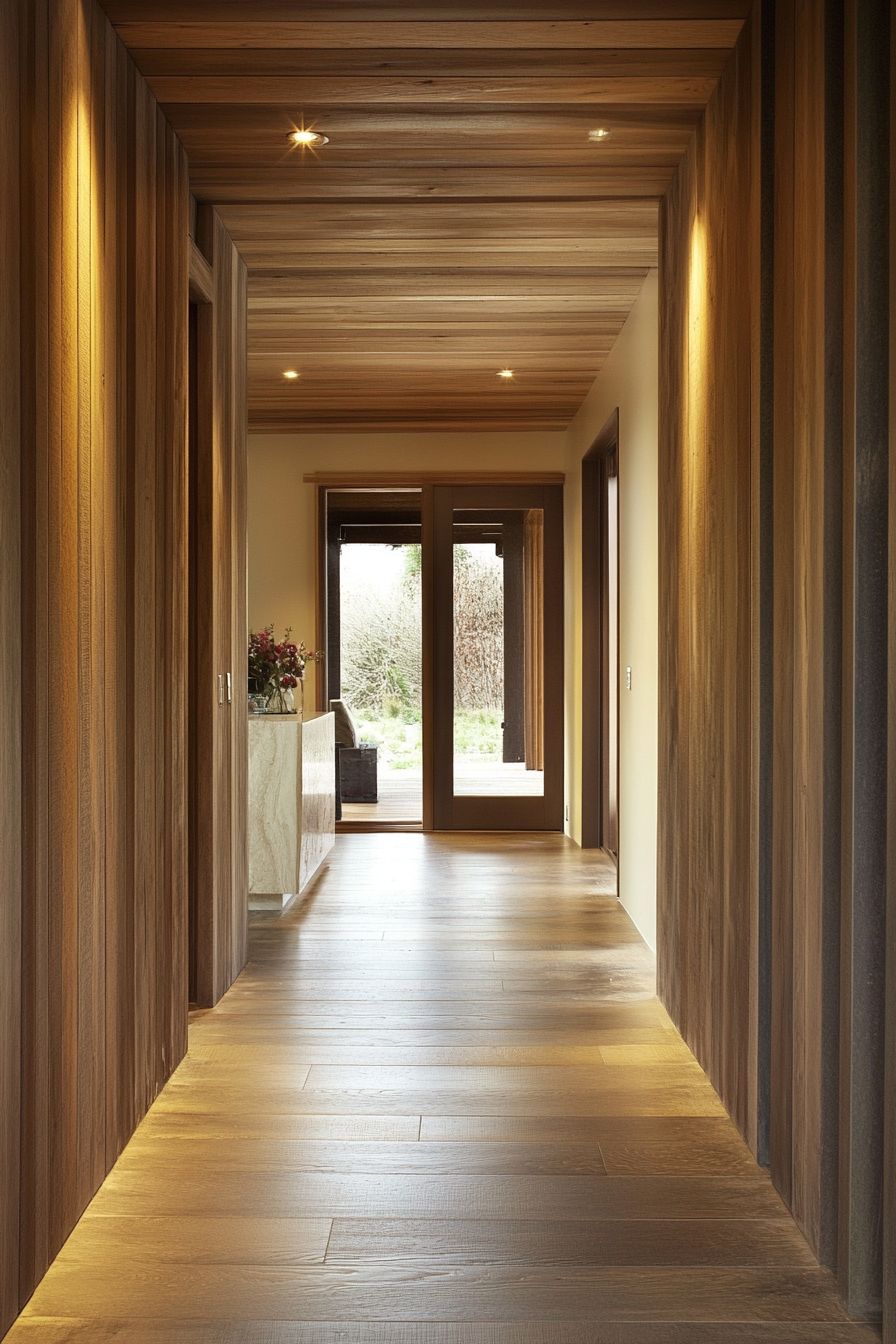
While board and batten originated as a rustic style, the simple pattern also pairs beautifully with contemporary spaces.
Sleek painted colors, neat precise lines and minimalist forms keep the look current.
Choose your materials and proportions specifically for a clean modern aesthetic.
Options like MDF, composite wood and PVC trim boards offer super straight edges and come pre-primed for an easy uniform surface.
Stick with simple squared battens rather than decorative trim pieces.
Paint or stain the wall treatment in dark sophisticated colors like black, navy or charcoal.
Install the boards and battens evenly with consistent spacing.
Use decorative hardware like brackets and hooks in a dark finish that blends in.
Maintain negative space around and between boards.
Avoid busy patterns or textures that compete with the bold vertical lines.
The finished modern board and batten backdrop highlights midcentury or contemporary furnishings.
Lean into metallics, leather and lux textures.
Floating shelves, statement light fixtures and abstract art enhance the sleek style.
DIY Faux Board and Batten

Don’t want to install actual boards or panels?
Create faux board and batten easily with paint techniques and painter’s tape.
Use tape to section off “battens” and fill in “boards” with two alternating paint colors.
When done, the taped stripes mimic shadow lines between planks.
Start by applying the base wall color over the entire surface.
Once dry, tape off vertical sections at even intervals where you want the faux shadow lines.
Paint the exposed strips between the tape with a contrasting color.
Carefully remove the tape before the paint dries to reveal crisp edges.
You can further enhance realism by dragging a dry brush through the edges to blend slightly, softening the lines.
Finish by painting or applying vinyl strips as false battens over the taped joints.
On a budget?
Do economy faux board and batten with just tape.
Create shadow lines as before, then remove the tape.
The color difference and residual adhesive staining gives the impression of aged battens between “boards”.
Faux painted board and batten adapts well to kids’ rooms, rentals and temporary installations.
Change up the paint colors to easily refresh the look.
The inexpensive treatment lets you enjoy on-trend style without big commitment.
✨Click to Get My 101 FREE Designer Room Ideas
Black and White Board and Batten
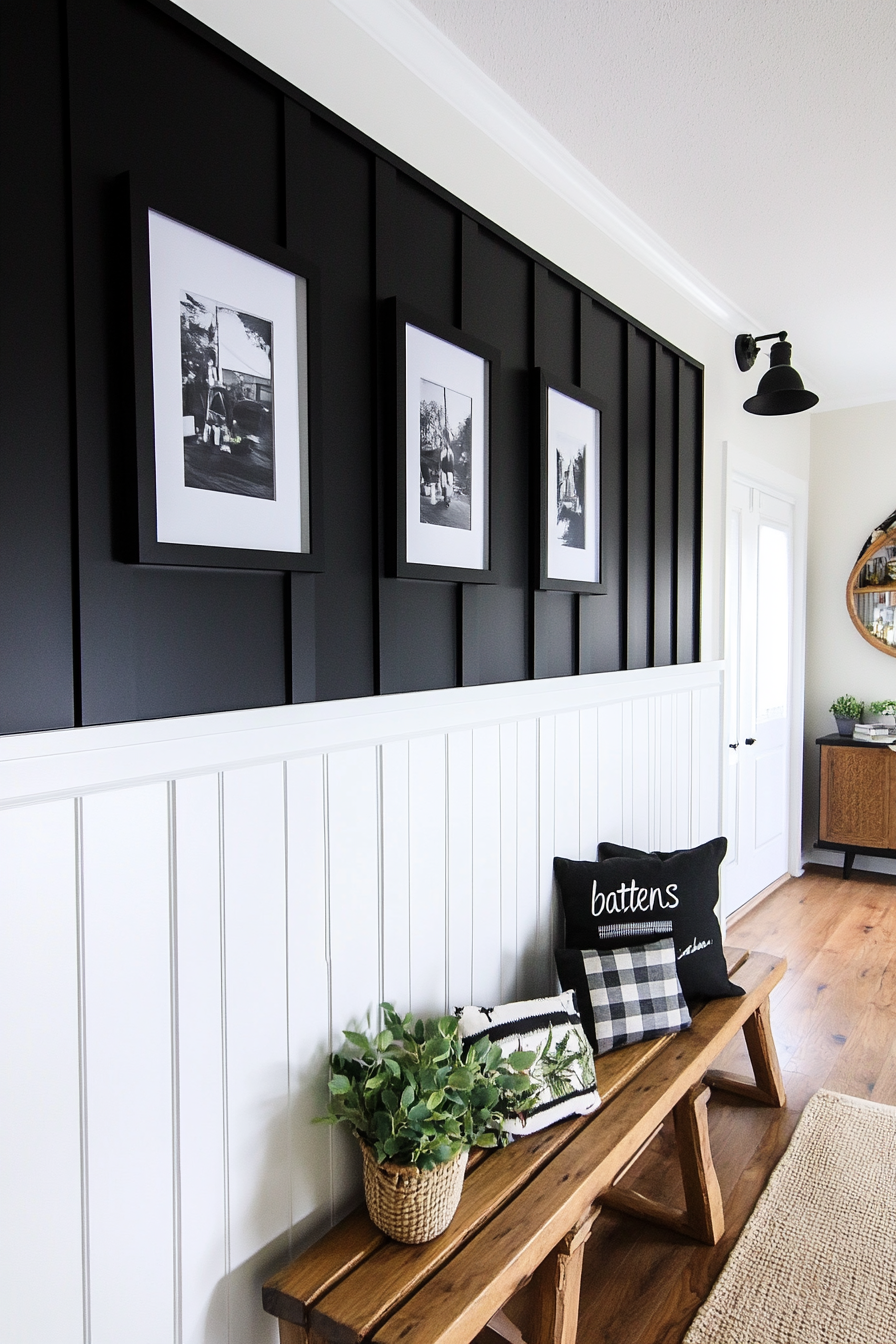
Nothing makes board and batten pop like crisp contrast between black and white.
The bold combo highlights the dimensional texture and clean architectural lines.
Black and white makes a dramatic style statement, yet effortlessly matches any decor.
For true black and white, use wood boards and battens, priming thoroughly and painting with quality matte black and bright white latex paints.
High-gloss paint reflects more light, but a matte finish allows the eye to focus on the alternating patterns.
Or create black and white faux board and batten with paint techniques over ply, drywall or existing surfaces.
Outline “battens” with painters tape, then fill walls and tape edges with black and white in sequence to mimic a checkerboard.
Black and white board and batten makes adjacent warm wood tones, polished metals and marble finishes really shine.
Accent with black and white photography framed symmetrically across the wall.
Keep additional furnishings and accents minimal.
Blended Board and Batten
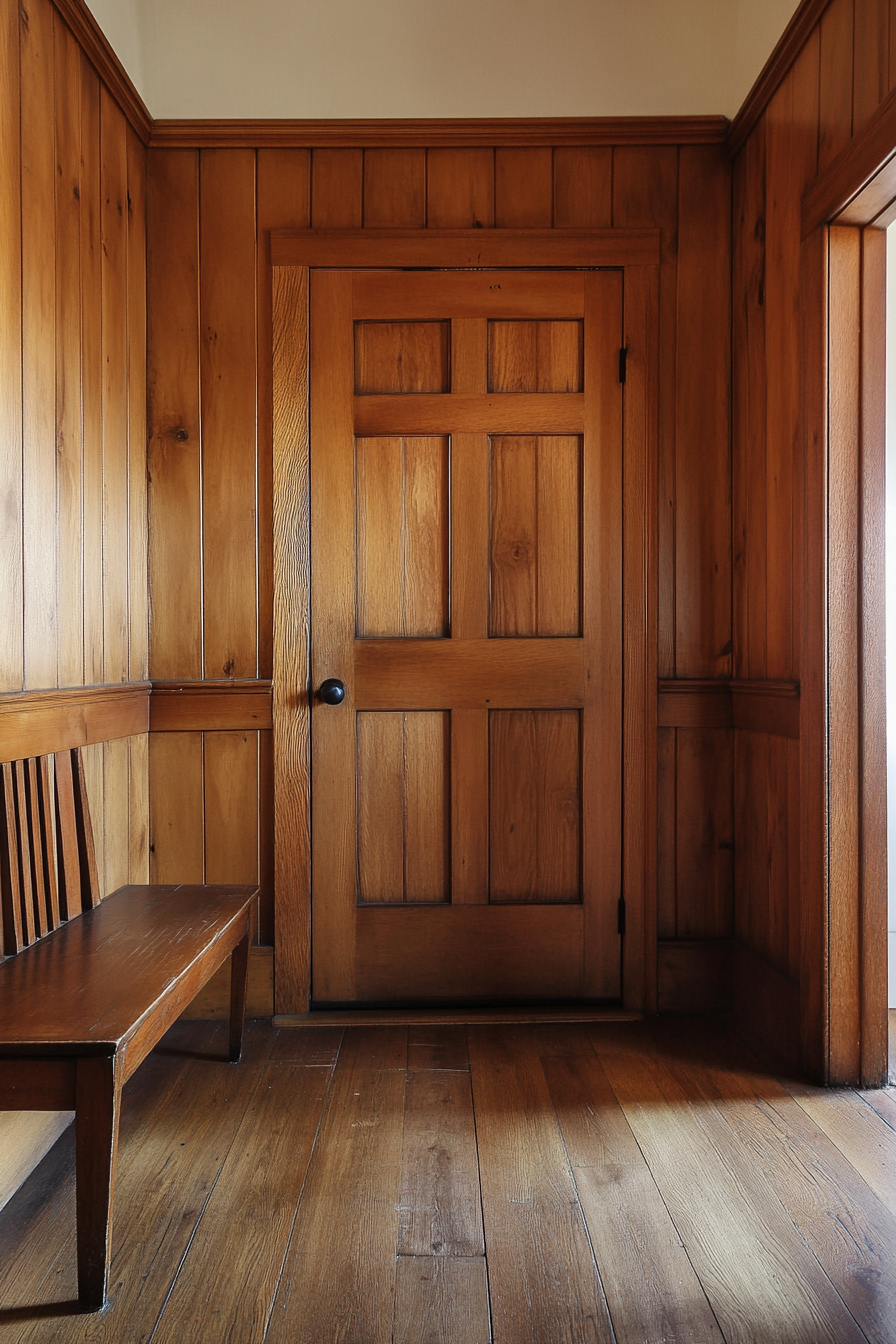
Why choose one material when you can use them all?
Blended board and batten encompasses a mix of wood, shiplap, stucco, brick and other surfaces divided by trim battens.
Embracing texture variety adds handcrafted appeal.
Including different elements like reclaimed barn wood and repurposed vintage signs personalizes the wall treatment.
Look for salvaged building materials from architectural salvage shops to upcycle.
Distress paint and finishes for timeworn charm.
You can also blend colors and patterns along with varied materials.
Pairing painted boards, wallpapered boards, solid stucco and exposed brick creates dynamic visual energy.
Include some intentionally irregular gaps between materials to heighten the bespoke effect.
The eclectic charm of blended board and batten echoes your family’s story.
Display meaningful art and family photos across the medley background.
The balance of blending while allowing each element to stand out grounds the welcoming style.
The classic board and batten wall treatment provides an opportunity for creativity.
Rustic, elegant, whimsical, modern and everything in between—this timeless look adapts easily to personal style and decor.
Especially in entryways, where you want to convey welcome, warmth and home.

